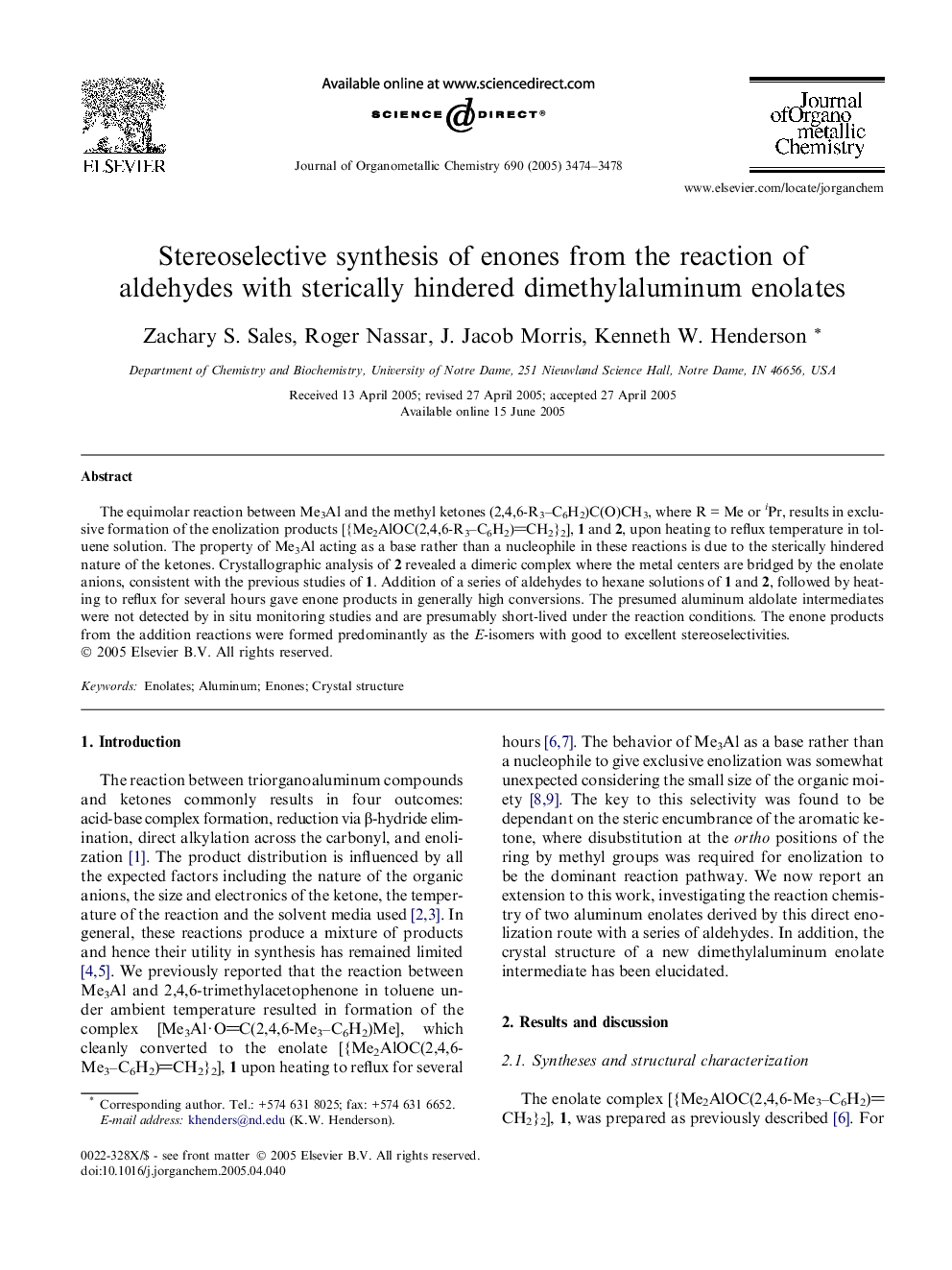| Article ID | Journal | Published Year | Pages | File Type |
|---|---|---|---|---|
| 1326363 | Journal of Organometallic Chemistry | 2005 | 5 Pages |
The equimolar reaction between Me3Al and the methyl ketones (2,4,6-R3–C6H2)C(O)CH3, where R = Me or iPr, results in exclusive formation of the enolization products [{Me2AlOC(2,4,6-R3–C6H2)CH2}2], 1 and 2, upon heating to reflux temperature in toluene solution. The property of Me3Al acting as a base rather than a nucleophile in these reactions is due to the sterically hindered nature of the ketones. Crystallographic analysis of 2 revealed a dimeric complex where the metal centers are bridged by the enolate anions, consistent with the previous studies of 1. Addition of a series of aldehydes to hexane solutions of 1 and 2, followed by heating to reflux for several hours gave enone products in generally high conversions. The presumed aluminum aldolate intermediates were not detected by in situ monitoring studies and are presumably short-lived under the reaction conditions. The enone products from the addition reactions were formed predominantly as the E-isomers with good to excellent stereoselectivities.
Graphical abstractAluminum enolates may be prepared from the reaction of Me3Al with sterically hindered aromatic ketones. The resulting metal enolates undergo aldol addition reactions with aldehydes at elevated temperatures, and the resulting aldolates rapidly eliminate to form stable enone products.Figure optionsDownload full-size imageDownload as PowerPoint slide
